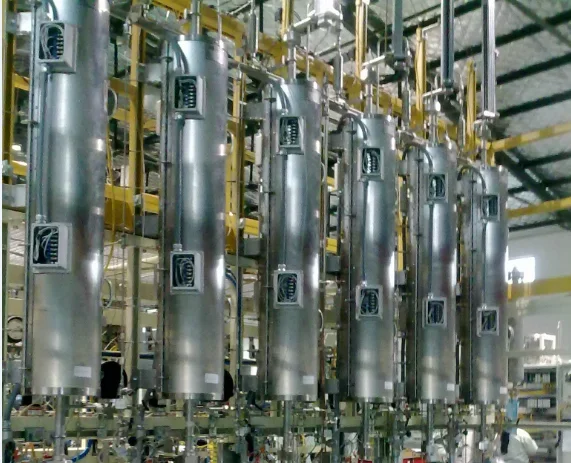Catalytic conversion processes play a crucial role in various industries, including petroleum refining, petrochemical production, and environmental protection. These processes involve the use of catalysts to facilitate chemical reactions and enhance the efficiency of the conversion. Among the different types of reactors used in catalytic conversion, fixed-bed units have gained significant importance due to their unique characteristics and advantages. This article explores the role of fixed-bed units in catalytic conversion processes, highlighting their design, operation, and applications.
Understanding Fixed-Bed Units
Definition and Structure
Fixed-bed units are reactors that consist of a fixed catalyst bed through which the reactants flow. The catalyst bed is typically composed of solid particles, pellets, or granules, providing a large surface area for the catalytic reactions to occur. The reactor is designed to maintain a fixed bed of catalyst, ensuring a continuous flow of reactants and products.
Advantages
Fixed-bed units offer several advantages over other types of reactors:
High conversion efficiency: The fixed catalyst bed allows for a longer contact time between the reactants and the catalyst, resulting in higher conversion rates.
Improved selectivity: The fixed-bed design enables better control over reaction conditions, leading to improved selectivity and reduced unwanted by-products.
Easy catalyst replacement: The fixed-bed reactor allows for easy replacement of catalysts, minimizing downtime during catalyst regeneration or replacement.

Design and Operation of Fixed-Bed Units
Reactor Design
Fixed-bed units are designed to optimize the contact between the reactants and the catalyst. The reactor typically consists of a cylindrical vessel with an inlet for the reactants and an outlet for the products. The catalyst bed is supported by a distributor plate, ensuring uniform flow distribution across the bed.
Reactor Operation
The reactants are introduced into the fixed-bed unit through the inlet, and they flow through the catalyst bed. The catalyst facilitates the desired chemical reactions, converting the reactants into products. The products are then collected at the outlet. The reactor operation parameters, such as temperature, pressure, and reactant flow rate, are carefully controlled to achieve the desired conversion and selectivity.

Applications of Fixed-Bed Units
Fixed-bed units find extensive applications in various catalytic conversion processes, including:
Petroleum refining: Fixed-bed reactors are used in processes such as hydrocracking, hydrotreating, and catalytic reforming to convert crude oil into valuable products like gasoline, diesel, and petrochemical feedstocks.
Petrochemical production: Fixed-bed units are employed in processes like steam cracking and methanol synthesis to produce important petrochemicals like ethylene, propylene, and methanol.
Environmental protection: Fixed-bed reactors are utilized in catalytic converters to remove harmful pollutants from vehicle exhaust gases, converting them into less harmful substances.

Conclusion
Fixed-bed units play a vital role in catalytic conversion processes, offering high conversion efficiency, improved selectivity, and easy catalyst replacement. Their design and operation parameters are carefully optimized to achieve desired conversion rates and product selectivity. With their extensive applications in petroleum refining, petrochemical production, and environmental protection, fixed-bed units continue to be an essential component in the industry's pursuit of efficient and sustainable catalytic conversion processes.
